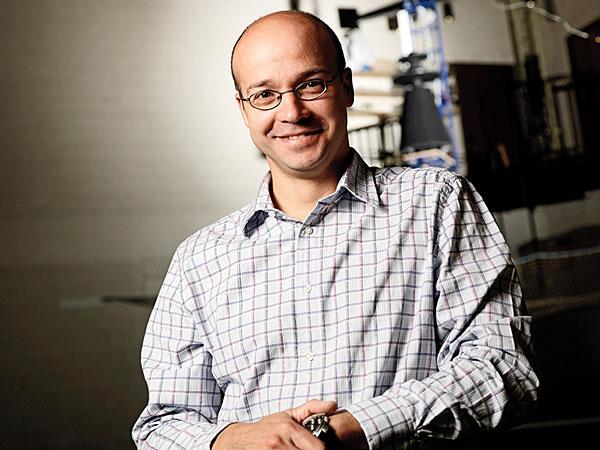Meet the Maestro: B&O Tonmeister Geoff Martin

S&V: For those who are not familiar with the word tonmeister, what does it mean?
GM: A tonmeister is a recording engineer and producer rolled into one, meaning (s)he knows as much about acoustics, microphones, and recording production techniques as about music performance. In practice, you become a tonmeister by first being a musician (I have a bachelor’s degree in pipe organ) and then continuing one’s education in physics, acoustics, and electronics, while learning studio techniques.
S&V: How (and when) did you become Bang & Olufsen’s tonmeister?
GM: I did my doctoral studies at McGill University in Montreal. Bang & Olufsen partially sponsored the multichannel audio lab there by providing a visiting professor as well as supplying loudspeakers. After completing my Ph.D., I stayed at McGill for an extra year as a faculty lecturer, but in 2002, I started looking for a job outside of academia. Bang & Olufsen invited me to join the company’s newly formed automotive department where I was part of the development team for our first Audi Advanced Sound System. About eight years ago, I moved into the Acoustics department and now focus on home loudspeakers.
S&V: Has B&O always had a tonmeister?
GM: As far back as I know, Bang & Olufsen has had a person whose responsibility it is to work with the acoustical engineers to ensure that the loudspeakers we produce sound good. Currently, we call that the “sound design” portion of the loudspeaker’s development process. While there have been other sound designers before me, I am the first trained tonmeister to have the position at Bang & Olufsen.
S&V: Describe the role you play in the company.
GM: Normally, about half of my job is directly in the development of a loudspeaker. I’m part of the initial specification process where we make the decisions about the expected performance of the loudspeaker. At that point, I’m helping to translate somewhat vague descriptions of the expectations into numbers that can be used for specifications. I come in again at the end of the development process when we are getting close to starting production. While the acoustic engineers are finishing their work, I help in identifying potential problems with the loudspeaker that they correct. After this, I work at the very end to do the final sound design (or “tweaking” or “voicing”) of the loudspeaker.
The other half of my job is quite varied. For example, I write a lot of the acoustical training materials, both for internal and external use, and I write a blog about the technical aspects of B&O loudspeakers and our development process.
S&V: You’ve said speakers should enable us to look at art (experience sound) through a “clear window”—in other words, through a speaker that does not color the sound. How do you realize this goal?
GM: When doing the final sound design of a loudspeaker, I begin by sitting in our main listening room and adding filters to improve the loudspeaker’s overall voicing (or tonal balance). These filters are essentially a correction for changes in the loudspeaker’s sound caused by the room. The issue is that one listening position in one room isn’t representative of everyone’s experience. So, once that initial tuning is done, we bring the loudspeaker to a different room and start the process from scratch. This is repeated in four or five rooms—and each of these results in approximately 40 to 50 filters that change the sound of the loudspeaker. We then analyze the results, comparing the filters that were added in each room. Any filters that are different (for example, 55 hertz in one room, but 36 Hz in another) are thrown out, since these are corrections for the individual rooms themselves. Any filter that is similar in all rooms must be either caused by the loudspeaker or by me (since those are the only two constants in the system). Hopefully, it’s not me, so the correction that was applied in all rooms is included in the tuning of the loudspeaker. So, we’re not averaging the results of the different rooms, we’re looking for what is common amongst them.
It’s important to note that we don’t use the same five rooms for every product, since different loudspeakers are used differently. When we’re done, the result is actually a loudspeaker that does color the sound—but does so intentionally to offset the acoustical effects of a typical living space.
S&V: Tell us about B&O’s new room compensation technology.
GM: Active Room Compensation (ARC) is a feature that was introduced in our newest loudspeaker, the BeoLab 90. It’s a new technology that will give our customers the ability to measure the resonant effects of their listening space at listening positions and to automatically create compensation filters to correct for these effects.
Our previous room compensation system, Adaptive Bass Control (ABC) in the BeoLab 5, was similar but could only correct for the entire room on average. ARC gives the user the option to measure and correct specific or combined “zones.”
























































